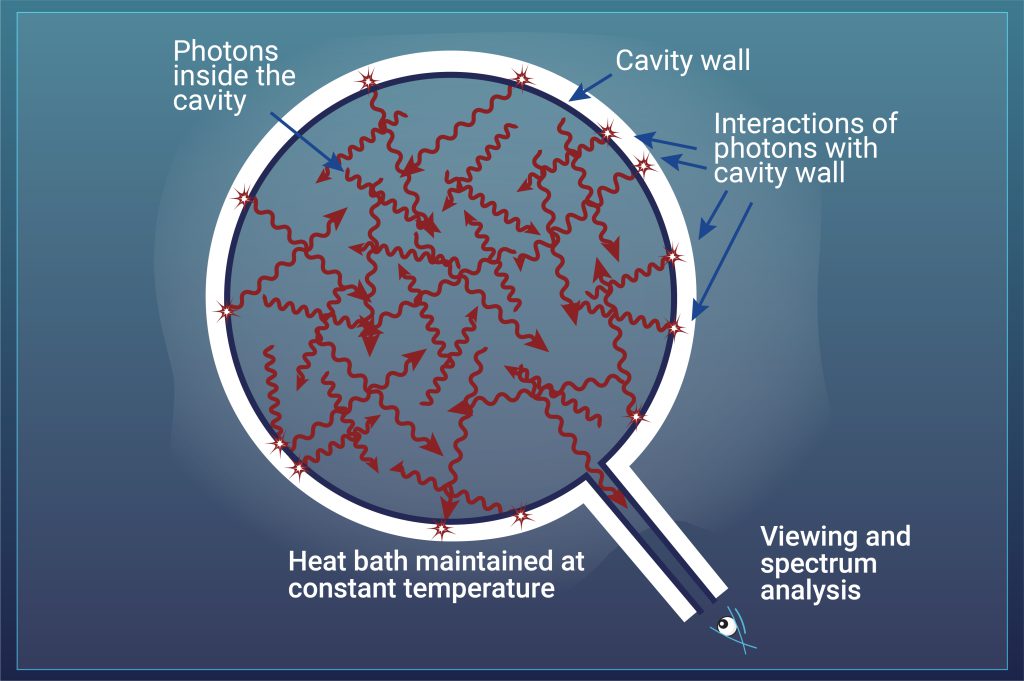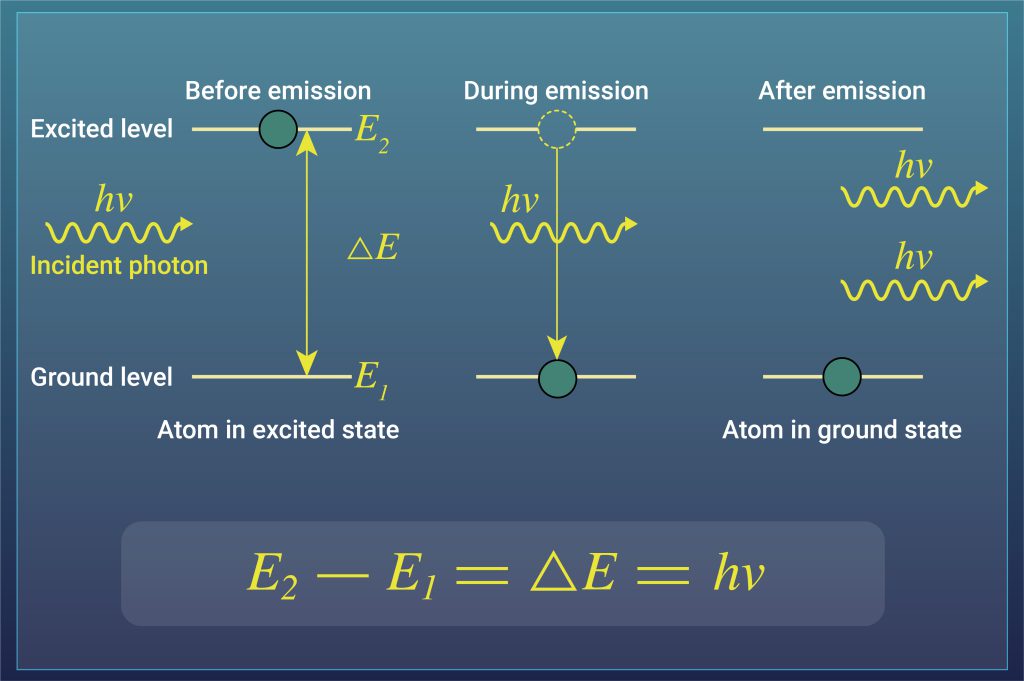
Light or electromagnetic wave is a wave of the electric and magnetic fields propagating in space and oscillating in time. It is an excited state of the system of the electromagnetic fields, whose ground state is vacuum, i.e., without amplitudes and where no photons exist. In case of black-body radiation, theoretically, it is a thermal equilibrium of the electromagnetic fields, i.e., thermal radiation inside a cavity consisting of mirrors (Figure 1). However, how can we measure this thermal radiation? Usually, we see the radiation or measure its spectrum through a small hole existing at the cavity mirror, which is not perfect in reality. Such a thermal radiation emitted outside does not strongly disturb the state of the electromagnetic fields inside the cavity, and it can be considered approximately in the thermal equilibrium.
However, this kind of non-equilibrium situation (energy flow between the system of interest and its environment) is usually taken into account when we study the electromagnetic wave and its interaction with matter.

The physics can be simplified in thermal equilibrium as generalized in thermodynamics and statistical physics. In contrast, quite a rich variety of physical phenomena appear in nonequilibrium situations. For example, laser (light amplification by stimulated emission of radiation) is a non-equilibrium phenomenon. Stimulated emission occurs when the electrons’ population (possibility of electrons) in an excited level is higher than that in the ground level (Figure 2). It is called population inversion, and it is sometimes interpreted as a state at a “negative temperature” because such a situation is not simply obtained in thermal equilibrium, where the temperature is basically defined as a positive quantity. Similarly, we can realize a variety of phenomena in non-equilibrium situations, which have been standard in studies of electromagnetic waves and their interaction with matter, as in other fields of physics, such as electrons’ transport in materials, spintronics, etc.
Because the physics in non-equilibrium situations is quite rich and a variety of (quasi-)particles (photons, electrons, phonons, magnons, etc.) are involved in the light-matter dynamics, some phenomena are still not fully understood. For example, the dynamics in the electromagnetic radiation of matter is in general quite complicated, although the measurement of emission spectra is a very standard way to first understand what kind of light-induced dynamics occur inside the material. Not in general but in some limited situations, we have elucidated mechanisms of the electromagnetic radiation (and the light-matter dynamics inside matter prior to radiation) theoretically and experimentally in collaboration with measurement groups through time-resolved spectroscopy and nonlinear optical responses (Bamba et al. and Bamba and Ishihara).
Once we understand the mechanism of phenomena, we can next consider their applications. A variety of applications such as communications, imaging, measurements, solar energy generation, laser processing, etc. have been developed based on the physics of the electromagnetic wave and its interaction with matter, and many researchers in the world are trying to improve the performance of these applications.
One such frontiers of research is the so-called quantum technologies. Quantum states of light (or other waves or particles), including squeezed light, entangled photons, single photons, etc., enable high-precision measurement, high-resolution imaging, highly secure communications, highperformance computing, etc. For example, the generation and application of the squeezed light are being investigated for improving the precision of a variety of measurements, including the gravitational wave.
The generation of a variety of quantum states of light is also an important aspect in this research field. We have theoretically and experimentally investigated how we can improve the generation of squeezed light (read more here), single photons (read more here), and entangled photons (Bamba and Ishihara).
In the studies of non-equilibrium light-mater dynamics, we may find universal laws in their rich variety of dynamics, and we may find novel phenomenon that the human-beings do not yet realize. We believe that these findings will advance our understanding of the world and the variety of technologies that link to the welfare and sustainability of humans and of the world.